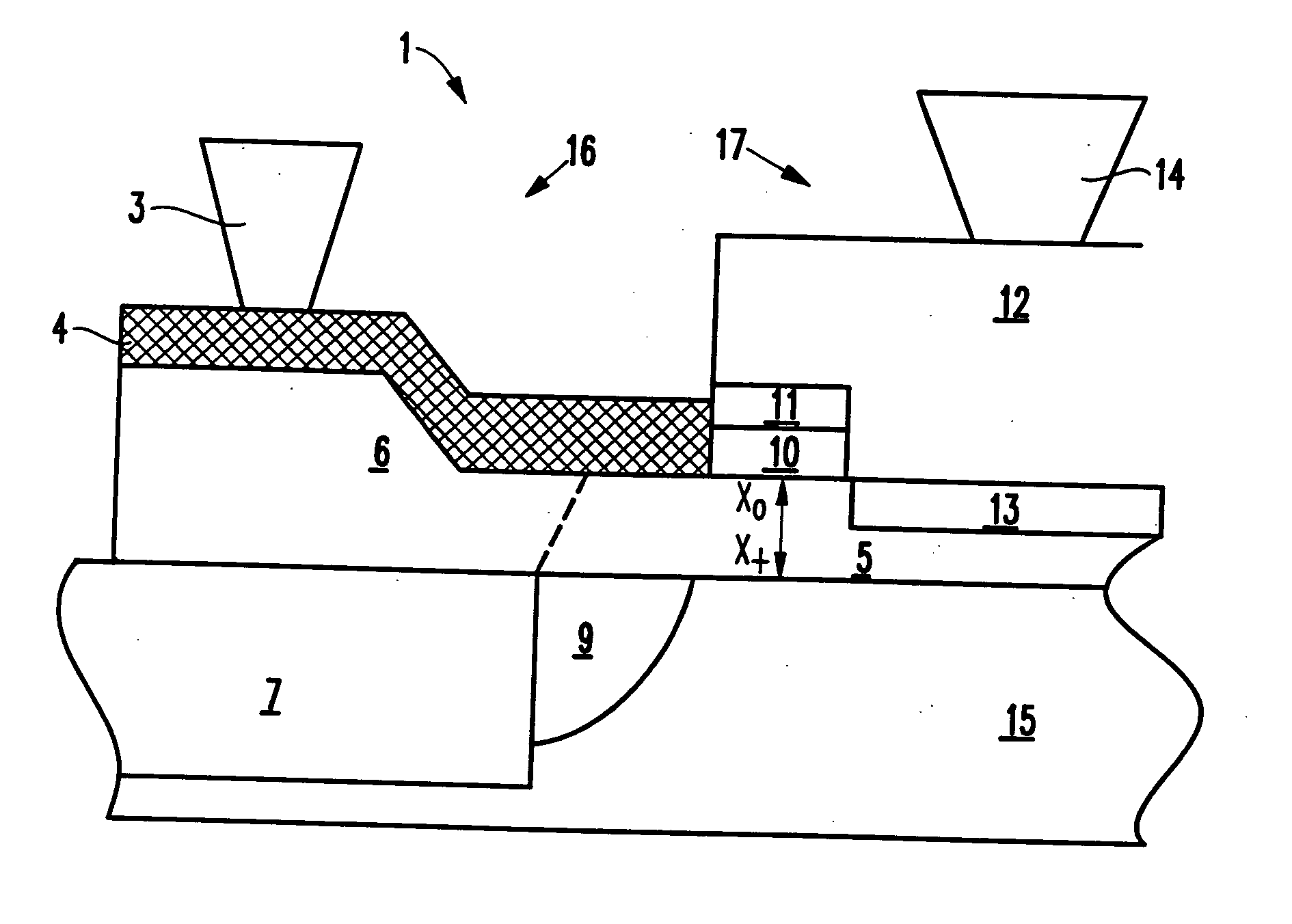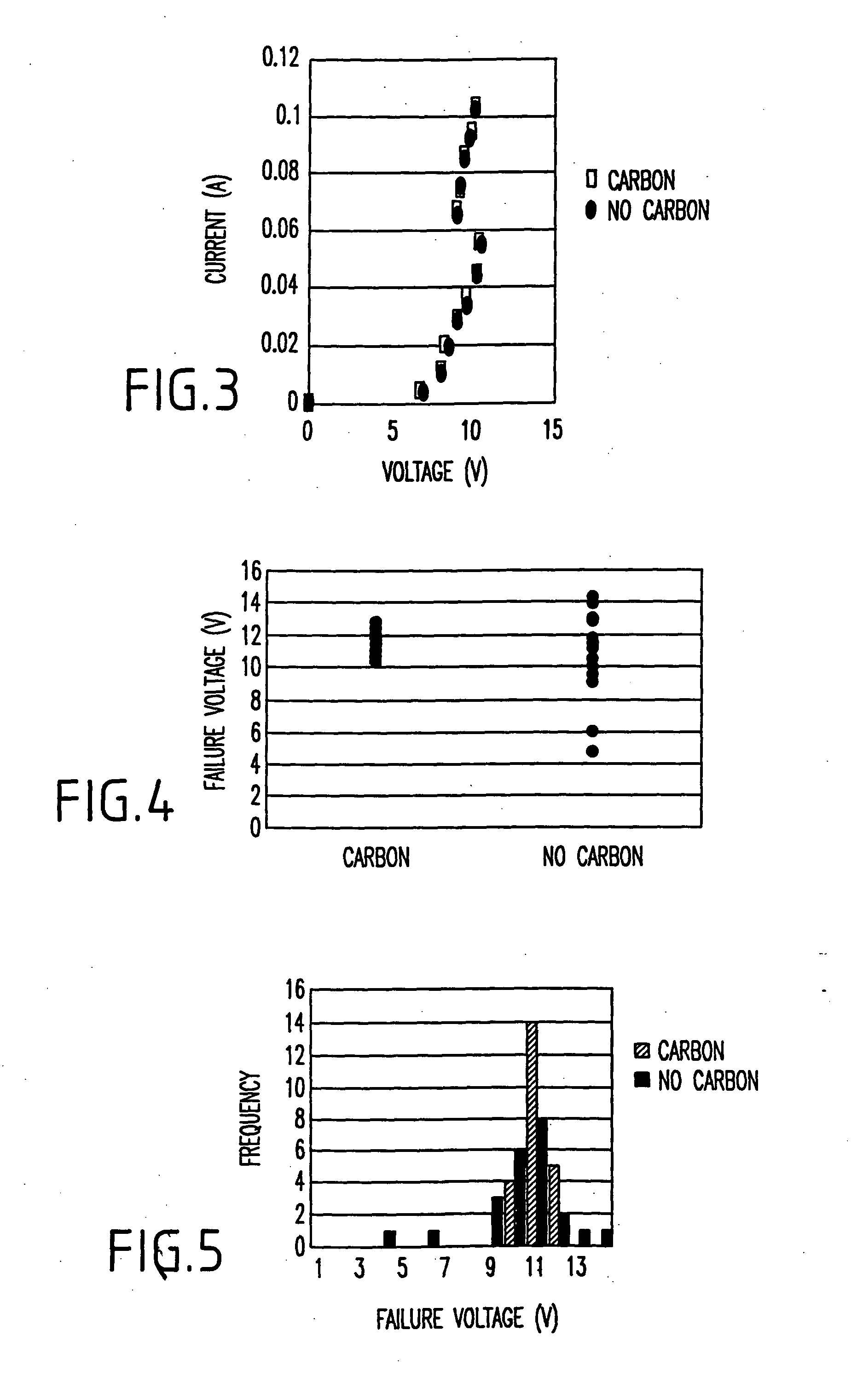Silicon germanium heterojunction bipolar transistor with carbon incorporation
a technology of carbon incorporation and heterojunction, which is applied in the field of silicon germanium carbon heterojunction bipolar transistor, can solve the problems of limiting the thickness of the film, the limitations of the conventional sige hbt device, etc., and achieves the effects of higher thermal strain, less initial strain, and more thermal robustness
- Summary
- Abstract
- Description
- Claims
- Application Information
AI Technical Summary
Benefits of technology
Problems solved by technology
Method used
Image
Examples
Embodiment Construction
[0032] As mentioned, silicon germanium technology has become a mainstream technology in today's radio frequency applications, high speed wired data transmission, test equipment, and wireless applications. However, the prior art silicon germanium heterojunction bipolar transistor devices suffer from two important limitations. First, the silicon germanium alloy film must remain below a critical thickness. Second, base dopants outdiffuse, which limits the base width scaling.
[0033] More specifically, germanium is introduced into the silicon layer to control the bandgap of the heterojunction bipolar transistor. Inclusion of germanium into the silicon introduces undesirable strain. At sufficient thicknesses, this strain can result in cracking (dislocations). Occurrences of such dislocations increase during thermal cycling. Therefore, the thickness of the silicon germanium layer is limited in conventional structures. As explained in greater detail below, by introducing carbon into the sil...
PUM
 Login to View More
Login to View More Abstract
Description
Claims
Application Information
 Login to View More
Login to View More - R&D
- Intellectual Property
- Life Sciences
- Materials
- Tech Scout
- Unparalleled Data Quality
- Higher Quality Content
- 60% Fewer Hallucinations
Browse by: Latest US Patents, China's latest patents, Technical Efficacy Thesaurus, Application Domain, Technology Topic, Popular Technical Reports.
© 2025 PatSnap. All rights reserved.Legal|Privacy policy|Modern Slavery Act Transparency Statement|Sitemap|About US| Contact US: help@patsnap.com



